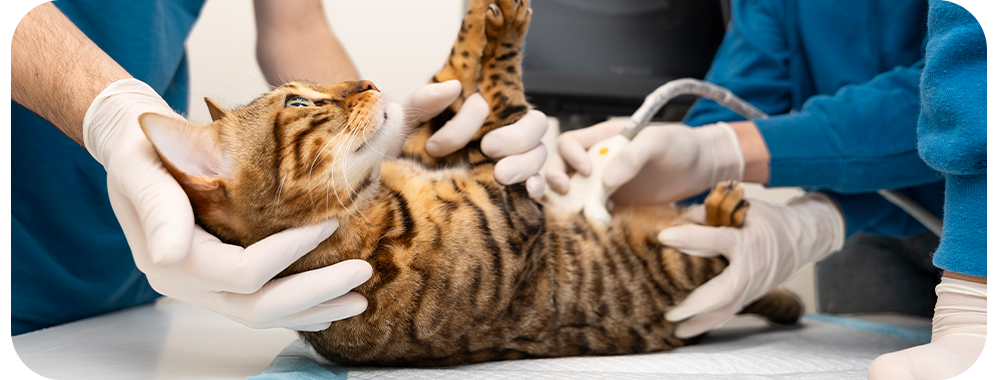Why Spaying Your Female Cat Is Essential: Health, Behavior, and Responsibility
Date: 2025-04-14 Categories: Trends Hits: 429
Why Spaying Your Female Cat Is Essential: Health, Behavior, and Responsibility

Table of Contents
I. Why Spaying Is Essential for Female Cats
1. Eliminating Health Threats
Unspayed female cats face significant health risks as they age:
Pyometra (uterine infection): Affects 1 in 4 unspayed cats; emergency treatment may cost $600–$1,500 (US) or €500–€1,200 (EU).
Mammary tumors: Spaying before the first heat reduces risk by up to 90%, while unspayed cats face 7× higher odds.
Ovarian cysts or dystocia: Found in about 60% of unspayed cats over six years old.
False pregnancy: Causes mastitis, appetite loss, and hormone imbalance.
Early spaying is the most effective way to prevent these life-threatening conditions.
2. Behavior & Quality of Life
Spaying improves both emotional stability and home harmony:
83% fewer heat-related problems: Less yowling, spraying, and restlessness.
70% fewer territorial conflicts: In multi-cat homes, fights drop from three per week to roughly one per month.
Better daily routines: Appetite and sleep become more stable once hormone cycles stop.
3. Ethical & Social Responsibility
Spaying supports humane pet ownership and reduces stray populations:
Reproductive control: One unspayed female and her offspring can produce over 200 kittens in just a few years.
Population impact: Spaying helps reduce stray kitten births by up to 90%.
Financial practicality:
Average spay cost: $150–$500 (US) | €120–€450 (EU)
Raising one litter: $700–$1,000+ (food, vaccines, litter, vet visits)
II. Science-Based Spaying Insights
1. Optimal Timing
Ideal age: Between 6–8 months, ideally before the first heat cycle.
Senior or high-risk cats: Require pre-surgery blood tests (heart, liver, kidney).
During heat: Surgery risk increases, including 50% more bleeding potential.
2. Surgery Types & Preparation
| Surgery Type | Procedure Description | Pros | Cons | Recovery Time | Cost Range |
|---|---|---|---|---|---|
| Traditional Open Surgery (Ovariohysterectomy) | 3–5 cm incision to remove ovaries and uterus | Clear visibility; lowest recurrence risk | Longer recovery; more discomfort | 7–10 days | $150–$400 (US) / €120–€350 (EU) |
| Laparoscopic Spay | Minimally invasive 0.5 cm incisions with endoscopic tools | 70% less pain; faster healing | Higher cost; requires specialist | 4–6 days | $400–$800 (US) / €350–€700 (EU) |
Pre-Op Checklist:
No food for 8 hours before surgery.
No water for 4 hours before anesthesia.
III. Golden 72-Hour Post-Op Care
1. Nutrition Plan
0–6 hours: Syringe-feed 5 ml glucose water gently at the mouth corner.
After 24 hours: Offer low-fat wet food (protein >10%) plus lactoferrin or immune-boosting supplements.
Avoid:
Beef or lamb: May cause inflammation.
Dry kibble: Can irritate the incision area.
2. Environment & Restrictions
Recovery Zone:
Quiet, enclosed space with non-slip mats.
No climbing or jumping for at least 5 days.
Monitor:
Appetite, temperature, and incision swelling.
Contact your vet if discharge, bleeding, or fever occurs.
Vet-Approved Tip Box: Expert Recovery Advice
1. Monitor Temperature & Appetite
A healthy cat should maintain a body temperature of 38–39°C (100–102°F).
If your cat becomes lethargic, refuses food, or feels cold to the touch — contact your vet immediately.
2. Keep the Incision Clean & Dry
Avoid bathing for 10–14 days post-surgery.
If the area appears red, swollen, or oozing, do not apply ointment yourself — seek veterinary care.
3. Limit Activity & Prevent Licking
Use an Elizabethan collar (E-collar) for at least 5–7 days to prevent licking or biting the wound.
Restrict jumping or climbing to protect stitches.
4. Support Recovery Through Nutrition
Choose easily digestible wet food with high moisture content to reduce strain.
Add lactoferrin, taurine, or probiotics for faster immune recovery.
Hydration is key — a smart water fountain like Tikpaws WF315 helps encourage post-op drinking.
5. Watch for Behavioral Changes
Mild sleepiness is normal for 24 hours, but excessive hiding, aggression, or continuous crying may signal pain or discomfort.
Consult your vet if symptoms persist.
